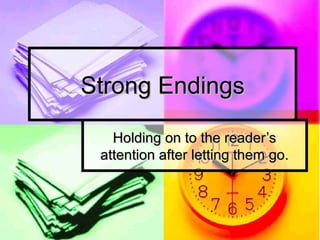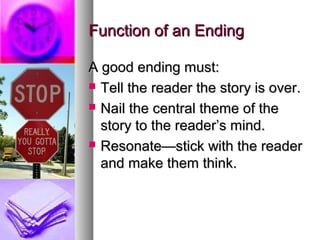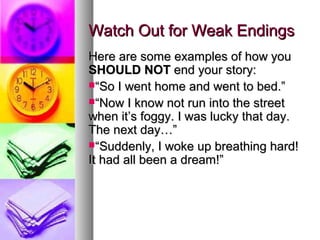The document discusses the importance of strong endings in stories. It states that a good ending must tell the reader the story is over, nail the central theme to the reader's mind, and resonate or make the reader think. A really good ending can also surprise the reader, present a twist, or do something unexpected. When writing the ending, the author should have it in mind from the start and use it as an opportunity to influence the reader. Common weak endings to avoid are ones that simply state the character went home or woke up to find it was a dream. Strong ending techniques include using a memory, feeling, decision, wish or defining moment that results from the main event of the story. The ending is important because it






